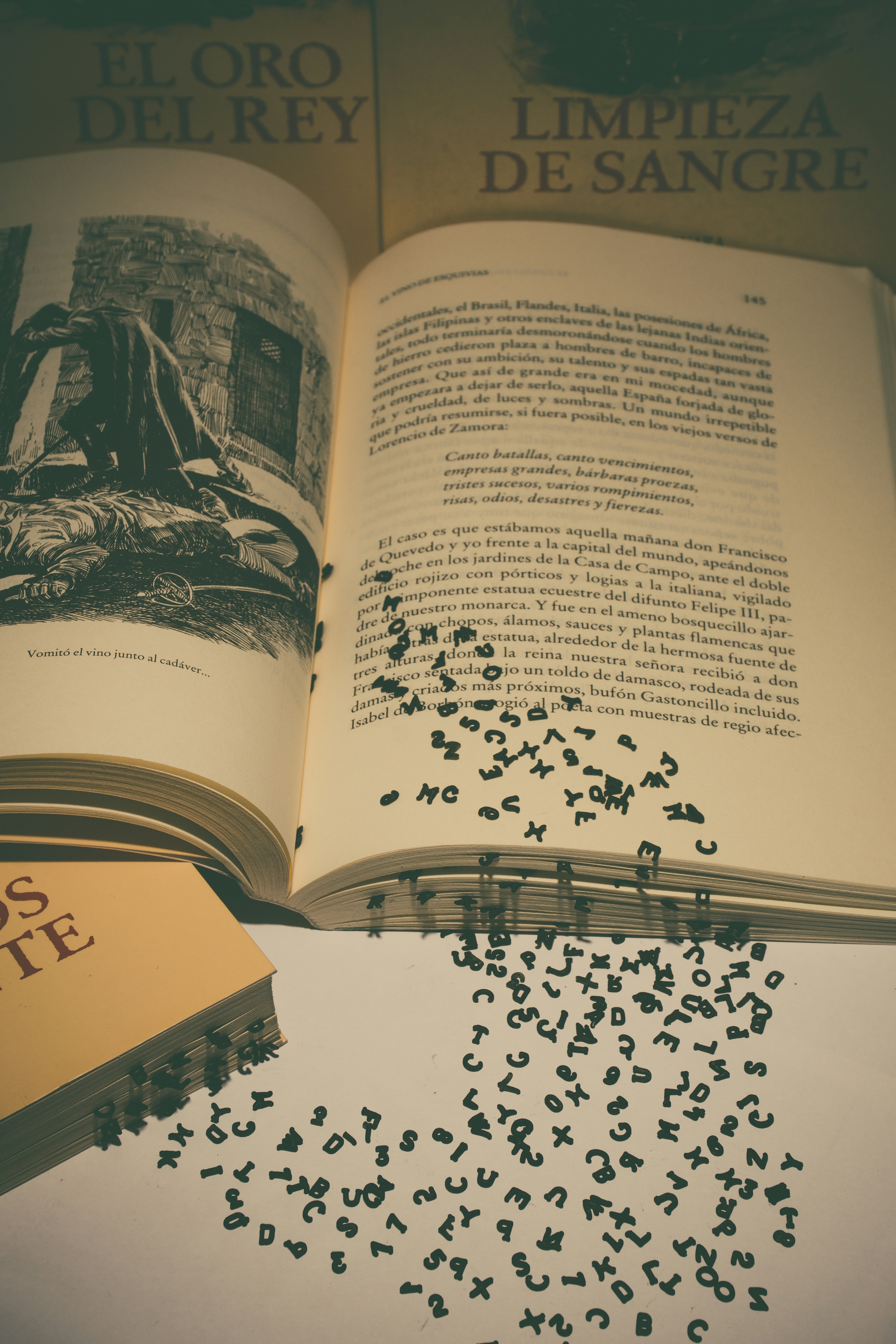/ Apr 19, 2025
Trending

When we think of literature, we often picture the solitary author, pen in hand or fingers on keys, channeling brilliance onto the page. Their name graces the book cover. Their voice leads the narrative. Their words endure.
But behind every powerful piece of writing is a team of invisible artisans—those who shape, polish, and elevate the work to its fullest form. Editors, translators, and sensitivity readers are the unsung heroes of the literary world. Their contributions are rarely spotlighted, yet they are essential to the books we cherish.
This article celebrates these crucial figures, exploring their roles, challenges, and impact on the literary ecosystem.
Editors are the closest collaborators an author will ever have. Depending on the type of editing involved, their responsibilities vary, but they always center on improving a manuscript’s clarity, structure, tone, and impact.
An editor may perform one or all of these roles, depending on the project and publisher.
“An editor is someone who separates the wheat from the chaff and then prints the chaff.”
—Adlai Stevenson (tongue firmly in cheek)
But the truth is, a great editor doesn’t leave fingerprints—they enhance the author’s voice without overpowering it.
Each played a defining role in crafting the books we now consider classics.
Translators don’t just convert words—they recreate a work’s tone, texture, and essence in another language. This means balancing faithfulness with fluidity, accuracy with artistry.
They must:
“Translation is that which transforms everything so that nothing changes.”
—Günter Grass
Translators are tasked with the impossible: to remain invisible and creative at the same time. The best translators are often called “co-authors” of the work—because they are.
Imagine The Odyssey, The Divine Comedy, or The Brothers Karamazov without translators. Modern literature as we know it wouldn’t exist.
Only recently have translators begun receiving shared recognition, such as being named alongside the author on book covers or award nominations.
But issues remain:
A sensitivity reader is hired to evaluate how a manuscript portrays specific identities or experiences, especially those the author doesn’t share firsthand.
They may focus on:
Their goal isn’t to censor or sanitize—it’s to prevent harmful stereotypes, inaccuracies, or blind spots that could alienate or misrepresent marginalized groups.
Literature shapes how we see the world—and ourselves. When stories misrepresent marginalized experiences, they reinforce real-world harm.
Sensitivity readers:
Critics often accuse sensitivity readers of pushing “political correctness” or “limiting free expression.” But this misunderstands their purpose. They are not gatekeepers—they are guides, helping authors write more responsibly and powerfully.
“It’s not about policing creativity—it’s about protecting humanity.”
—Dhonielle Clayton, author and sensitivity reader
Several high-profile works have been revised based on sensitivity reads:
We often envision writers working in solitude. But books are rarely made alone. They are the result of collaborative creativity—conversations, critiques, corrections, and careful decisions.
Each behind-the-scenes contributor adds:
This ecosystem doesn’t dilute the writer’s voice. It amplifies it, ensuring the message resonates clearly and respectfully across audiences and cultures.
When editors are sidelined:
When translators are undervalued:
When sensitivity readers are ignored:
In short, quality, reach, and responsibility all suffer when we overlook these crucial contributors.
The literary world is slowly evolving to give these roles the credit they deserve.
Literature is a mosaic. Authors lay the foundation, but editors refine the shape, translators carry it across borders, and sensitivity readers ensure it doesn’t wound along the way. Together, they help literature do what it does best: illuminate, connect, and endure.
So the next time a line in a novel moves you to tears, or a story written in another language feels like it was made for your soul, remember: someone helped shape that moment behind the scenes.
They may be unsung—but their fingerprints are on every page.
When we think of literature, we often picture the solitary author, pen in hand or fingers on keys, channeling brilliance onto the page. Their name graces the book cover. Their voice leads the narrative. Their words endure.
But behind every powerful piece of writing is a team of invisible artisans—those who shape, polish, and elevate the work to its fullest form. Editors, translators, and sensitivity readers are the unsung heroes of the literary world. Their contributions are rarely spotlighted, yet they are essential to the books we cherish.
This article celebrates these crucial figures, exploring their roles, challenges, and impact on the literary ecosystem.
Editors are the closest collaborators an author will ever have. Depending on the type of editing involved, their responsibilities vary, but they always center on improving a manuscript’s clarity, structure, tone, and impact.
An editor may perform one or all of these roles, depending on the project and publisher.
“An editor is someone who separates the wheat from the chaff and then prints the chaff.”
—Adlai Stevenson (tongue firmly in cheek)
But the truth is, a great editor doesn’t leave fingerprints—they enhance the author’s voice without overpowering it.
Each played a defining role in crafting the books we now consider classics.
Translators don’t just convert words—they recreate a work’s tone, texture, and essence in another language. This means balancing faithfulness with fluidity, accuracy with artistry.
They must:
“Translation is that which transforms everything so that nothing changes.”
—Günter Grass
Translators are tasked with the impossible: to remain invisible and creative at the same time. The best translators are often called “co-authors” of the work—because they are.
Imagine The Odyssey, The Divine Comedy, or The Brothers Karamazov without translators. Modern literature as we know it wouldn’t exist.
Only recently have translators begun receiving shared recognition, such as being named alongside the author on book covers or award nominations.
But issues remain:
A sensitivity reader is hired to evaluate how a manuscript portrays specific identities or experiences, especially those the author doesn’t share firsthand.
They may focus on:
Their goal isn’t to censor or sanitize—it’s to prevent harmful stereotypes, inaccuracies, or blind spots that could alienate or misrepresent marginalized groups.
Literature shapes how we see the world—and ourselves. When stories misrepresent marginalized experiences, they reinforce real-world harm.
Sensitivity readers:
Critics often accuse sensitivity readers of pushing “political correctness” or “limiting free expression.” But this misunderstands their purpose. They are not gatekeepers—they are guides, helping authors write more responsibly and powerfully.
“It’s not about policing creativity—it’s about protecting humanity.”
—Dhonielle Clayton, author and sensitivity reader
Several high-profile works have been revised based on sensitivity reads:
We often envision writers working in solitude. But books are rarely made alone. They are the result of collaborative creativity—conversations, critiques, corrections, and careful decisions.
Each behind-the-scenes contributor adds:
This ecosystem doesn’t dilute the writer’s voice. It amplifies it, ensuring the message resonates clearly and respectfully across audiences and cultures.
When editors are sidelined:
When translators are undervalued:
When sensitivity readers are ignored:
In short, quality, reach, and responsibility all suffer when we overlook these crucial contributors.
The literary world is slowly evolving to give these roles the credit they deserve.
Literature is a mosaic. Authors lay the foundation, but editors refine the shape, translators carry it across borders, and sensitivity readers ensure it doesn’t wound along the way. Together, they help literature do what it does best: illuminate, connect, and endure.
So the next time a line in a novel moves you to tears, or a story written in another language feels like it was made for your soul, remember: someone helped shape that moment behind the scenes.
They may be unsung—but their fingerprints are on every page.
It is a long established fact that a reader will be distracted by the readable content of a page when looking at its layout. The point of using Lorem Ipsum is that it has a more-or-less normal distribution of letters, as opposed to using ‘Content here, content here’, making it look like readable English. Many desktop publishing packages and web page editors now use Lorem Ipsum as their default model text, and a search for ‘lorem ipsum’ will uncover many web sites still in their infancy.
It is a long established fact that a reader will be distracted by the readable content of a page when looking at its layout. The point of using Lorem Ipsum is that it has a more-or-less normal distribution of letters, as opposed to using ‘Content here, content here’, making it look like readable English. Many desktop publishing packages and web page editors now use Lorem Ipsum as their default model text, and a search for ‘lorem ipsum’ will uncover many web sites still in their infancy.
The point of using Lorem Ipsum is that it has a more-or-less normal distribution of letters, as opposed to using ‘Content here, content here’, making

The point of using Lorem Ipsum is that it has a more-or-less normal distribution of letters, as opposed to using ‘Content here, content here’, making it look like readable English. Many desktop publishing packages and web page editors now use Lorem Ipsum as their default model text, and a search for ‘lorem ipsum’ will uncover many web sites still in their infancy.
It is a long established fact that a reader will be distracted by the readable content of a page when looking at its layout. The point of using Lorem Ipsum is that it has a more-or-less normal distribution
Copyright BlazeThemes. 2023